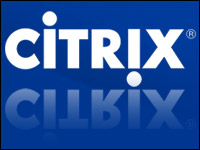
Mozilla on Tuesday released the first beta of the next version of its browser, Firefox 3.1. The beta includes an enhanced Smart Location Bar, a new tab interface and what should be a faster JavaScript engine, dubbed “TraceMonkey.”
Developers also included improved Web standards in the Gecko layout engine; added support for CSS (cascading style sheets) 2.1 and CSS 3 properties as well as support for new Web technologies such as video and audio elements, the W3C Geolocation API (application programming interface), Web worker threads, SVG (Scalable Vector Graphics) transforms and offline applications, according to Mozilla.
The release of Firefox 3.1 beta 1 marks another development milestone for the browser. However, Mozilla cautioned that while the release is stable, it is intended for Web developers and members of its testing community who can provide early evaluation and feedback.
Users who download the beta should not expect their add-ons to work properly, the software maker said.
Standardizing the Web
“For Web developers, the new capabilities and faster performance will, of course, be very popular, and will result in even more responsive and compelling applications for users over time,” said Mike Connor, Mozilla’s Firefox architect. “Mozilla believes that enabling and enhancing the capabilities of rich Web applications is a key to our mission of promoting both choice and innovation on the Internet, and we are committed to continued investment in pursuit of those improvements.”
The newly improved Web standards are the most notable change in Firefox 3.1 beta 1, said Jeffrey Hammond, a Forrester Research analyst. For browser developers, it’s the latest trend and a push toward HTML 5.
“There seems to be a ‘race to the top’ among the lead browsers to claim the mantle of ‘most standard compliant.’ I think this is a very healthy thing,” he told LinuxInsider.
“I’d also point out that the gradual embrace of some of the new tags that start developers down the path of HTML 5 support. It’s the early start of a collapse of RIA (rich Internet application)-style development into the core browser itself, as opposed to separate plug-ins,” he added
Something for the Average Joe
Mozilla did not forget about its users. The new beta offers users a peek at a new tab-switching functionality that gives a preview of the tab before you switch to it by hitting the CTRL and Tab buttons.
Then there’s the latest change to the Awesome Bar, which now supports special characters. The addition allows users to restrict their searches by typing “^” for history-only queries or “+” for tagged page searches.
The browser’s new Location Bar, a location API, is also a significant change, said Hammond.
“It has long term-consequences for mobile developers. As we see slimmed-down browsers like Fennec in 2009, support for this enables Web apps that will do things with location that developers must build natively today,” he noted.
With the inclusion of the much talked-about Trace Monkey JavaScript engine, users should see a noticeable increase in the browsers speed as well.
Users jazzed about the changes in beta 1 will have something to look forward to in beta 2, said Connor.
“There are other UI (user interface) changes in beta 1 and a number of additional changes coming for beta 2 that will have a more immediate and obvious impact on our users. In beta 1 the most obvious changes are improvements to the Smart Location Bar and the enhanced tab switching behavior, which uses page previews to help users find the right tab. In beta 2 we expect to add more powerful privacy tools as well as further enhancements to the existing features, and we’re very excited about where things are going,” he concluded.




















































